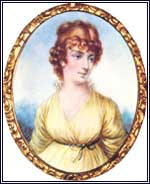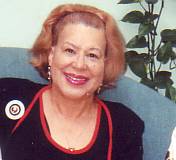We can only wonder as to the relationship that existed between Sarah (Sally) Hemings and Martha Jefferson, both of whom were obviously blood relatives to one another and both loved by Thomas Jefferson. To the best of our knowledge none of the Hemings offspring had any ill words to say about her or Thomas Jefferson; but, a lot of resentment was evident about the differences in treatment of Martha's children versus their own who were also his flesh and blood.
Martha knew about the human relationships at Monticello, and to her credit sought to protect the image of her father while at the same time treating Hemings offspring as defacto relatives; and, keeping them arms length from the Randolph in-laws and cousins.
From Wikipedia, the free encyclopedia

Martha Washington Jefferson Randolph (September 27, 1772 – October 10, 1836), was the daughter of Thomas Jefferson, the third President of the United States, and his wife Martha Wayles Skelton Jefferson. She was born in Monticello, near Charlottesville, Virginia and was named in honor of Martha Washington, wife of George Washington.
She was educated in Philadelphia, Pennsylvania and Paris. She is now considered to have been First Lady of the United States from March 4, 1801 to March 3, 1809 because her father was a widower. She earned a reputation as an intellectual.
She educated her children at home. She inherited Monticello from her father in 1826. She faced increasing financial difficulties and had to sell it to James T. Barclay in 1831. She was estranged from her husband until shortly before his death in 1828. She died at her Edgehill estate in Albemarle County, Virginia.
In 1790, Martha married Thomas Mann Randolph Jr. and was mother to twelve children:
Ellen Wayles Randolph (1796 - 1876). Named after deceased older sister. Married to Joseph Coolidge.
Meriwether Lewis Randolph (1810 - 1837). His widow Elizabeth Martin remarried to Andrew Jackson Donelson-nephew of President Andrew Jackson.
Martha Jefferson's half-brothers Madison and Eston Hemings left the Charlottesville, Virginia area after her death, ... suggesting they had no further reasons to remain linked or visit Monticello, although childhood friendships existed between them and Mary Jefferson Randolph and James Madison Randolph plus some of the older cousins. Madison named some of his children in memory of them.
Madison would have been disappointed but not surprised when the State of Virginia created by generations of Randolph's related to him, ... joined the radicals of South Carolina and other slave holding states in rebellion against the United States. He would have held the utmost resentment against George Wythe Randolph for joining the rush to disaster for Virginia that would become a battle-ground and suffer greatly in the war.
George Wythe Randolph (March 10, 1818 – April 3, 1867) was a lawyer and the Confederate States Secretary of War during the American Civil War. He was also Thomas Jefferson's grandson. Randolph was born at Monticello in Charlottesville, Virginia, to Thomas Mann Randolph Jr. {descendant of Pocahontas} and Martha Jefferson Randolph (daughter of U.S. President Thomas Jefferson).
Named in honor of George Wythe, he was a relative of Edmund Randolph, who served in George Washington's cabinet as the first Attorney General of the United States, as well as colonist William Randolph through both his mother and father's sides of the family. Randolph briefly attended school in Cambridge, Massachusetts, and served as a midshipman in the United States Navy. He attended the University of Virginia before moving to Richmond and becoming a lawyer. On April 10, 1852, he married Mary Elizabeth Adams (1830–1871).
As the Confederacy was established and the United States divided into two hostile camps, both sides moved steadily toward open conflict. A special delegation, composed of Randolph, William B. Preston and Alexander H.H. Stuart, travelled to Washington, D.C. where they met President Abraham Lincoln on April 12, 1861. Finding the President firm in his resolve to hold the Federal forts then in the South, the three men returned to Richmond, Virginia on April 15. He joined the Confederate army, serving as a major in the Battle of Big Bethel, and was promoted to brigadier general on February 12, 1862. Randolph was appointed by Jefferson Davis as Secretary of War on March 18, 1862, and he took office on March 24, 1862, but resigned on November 17, 1862.
Randolph fled to Europe after the Confederacy fell. He returned to Virginia where he died two years later in 1867 from pneumonia. He is buried in the Jefferson family graveyard at Monticello. He is pictured on the $100.00 bill of the Confederate States of America.
Preceded by | Confederate States Secretary of War | Succeeded by |
Confederate States Cabinet | |
|---|---|
President | Jefferson Davis |
Vice President | Alexander H. Stephens |
Secretary of State | Robert A. Toombs • Robert M. T. Hunter • Judah P. Benjamin |
Secretary of the Treasury | Christopher G. Memminger • George A. Trenholm • John H. Reagan |
Secretary of War | Leroy P. Walker • Judah P. Benjamin • George W. Randolph • James A. Seddon • John C. Breckinridge |
Secretary of the Navy | Stephen R. Mallory |
Postmaster General | John H. Reagan |
Attorney General | Judah P. Benjamin • Thomas Bragg • Thomas H. Watts • George Davis |













